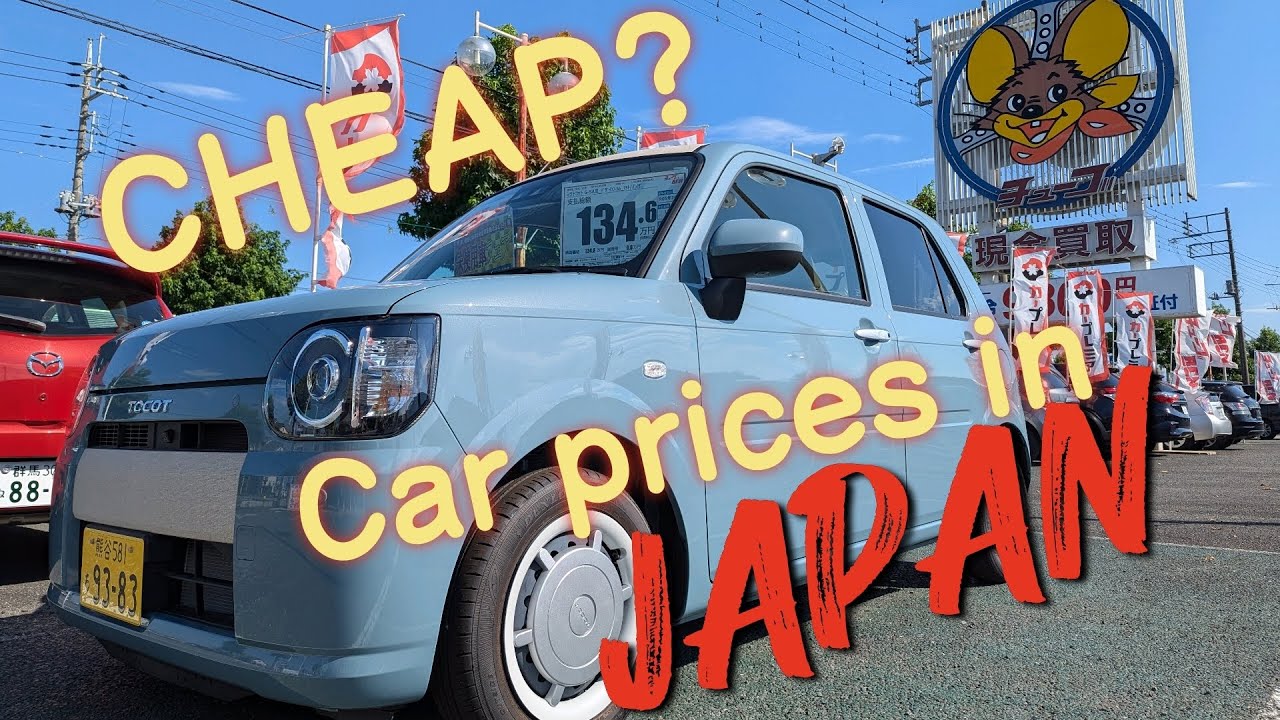How Much Do Cars Cost In Japan

So, you’re thinking about diving into the Japanese car market, huh? Smart move! Whether you're importing a dream JDM machine, sourcing parts, or just curious about the pricing landscape, understanding the cost structure is crucial. This isn't just about MSRP; it's a deep dive into the factors that influence what you'll actually pay. Think of me as your experienced mechanic, guiding you through the gears of Japanese car pricing.
The Sticker Price and Beyond: Decoding the Initial Cost
The initial purchase price, often advertised as the "MSRP" (Manufacturer's Suggested Retail Price) or the equivalent in Japan, is just the starting point. This is where understanding the nuances of the Japanese system becomes important.
Key Specs and Main Price Components:
- Base Vehicle Price: This is the "bare bones" cost of the car itself, before any extras. Think of it like the engine block before you add any bolt-ons.
- Consumption Tax (消費税, Shōhizei): This is the Japanese equivalent of sales tax. It's currently set at 10% (as of late 2023), but this can change, so always double-check.
- Automobile Acquisition Tax (自動車取得税, Jidōsha Shutokuzei): This tax is levied when you acquire (purchase or receive as a gift) a vehicle. The rate varies depending on the car's environmental performance and fuel efficiency. Eco-friendly cars often qualify for significant reductions or even exemptions. Understanding the "Eco-Car" status of a vehicle is key.
- Weight Tax (自動車重量税, Jidōsha Jūryōzei): This is a tax based on the vehicle's weight. Heavier vehicles pay more. It's paid when you register the car and then every two years during the mandatory Shaken inspection (more on that later).
- Liability Insurance (自賠責保険, Jibaiseki Hoken): Compulsory insurance that covers bodily injury to third parties in the event of an accident. You can't legally drive a car without it.
- Registration Fees (登録費用, Tōroku Hiyō): Fees associated with registering the car in your name. This includes the cost of the license plates and other administrative tasks.
- Dealer Options and Accessories (オプション, Opushon): This is where things can really add up. Things like navigation systems, upgraded audio, body kits, and premium paint options all increase the price.
- Dealer Handling Fee (販売手数料, Hanbai Tesūryō): This is a fee the dealer charges for preparing the vehicle and handling the paperwork. This is often negotiable, so don't be afraid to push back.
The Shaken Inspection: A Costly but Necessary Evil
The Shaken (車検) is Japan's mandatory vehicle inspection. It's required every two years (or sometimes annually for commercial vehicles and older cars) and ensures that the vehicle meets safety and emissions standards. This is where you'll see a lot of older cars get scrapped, because the cost to bring them up to code can sometimes outweigh their value.
Shaken-Related Costs:
- Inspection Fee: The cost of the inspection itself, which varies depending on the facility.
- Compulsory Maintenance: The Shaken often necessitates replacing worn parts, such as brake pads, tires, and fluids. This can be a significant expense.
- Weight Tax (Renewal): You'll pay the weight tax again during the Shaken process.
- Liability Insurance (Renewal): You'll also renew your liability insurance.
Other Ongoing Costs: Beyond the Purchase Price
Once you own the car, you'll face ongoing expenses. Budgeting for these is essential.
- Voluntary Insurance (任意保険, Nin'i Hoken): This is optional but highly recommended. It provides coverage beyond the basic liability insurance.
- Fuel Costs: Gas prices in Japan are generally higher than in the US.
- Parking Fees: Parking can be expensive, especially in major cities. Many apartment buildings don't include parking, so you'll need to rent a space.
- Maintenance and Repairs: Regular maintenance, such as oil changes and tune-ups, is crucial to keeping your car running smoothly.
- Toll Roads: Japan has an extensive network of toll roads, which can add up quickly if you do a lot of driving. The Electronic Toll Collection (ETC) system can help to streamline payment.
Real-World Use: Spotting a Good Deal
So, how do you use this information to find a good deal? Here are a few tips:
- Negotiate: Don't be afraid to negotiate the price, especially the dealer handling fee.
- Consider Used Cars: Used cars can be a great value, but be sure to have them inspected by a trusted mechanic before you buy. Look for a Shaken certificate.
- Look for Eco-Car Incentives: If you're buying a new car, look for models that qualify for eco-car tax breaks.
- Factor in the Shaken: When buying a used car, consider how soon the next Shaken is due and factor that cost into your budget.
- Research Prices Online: Use websites like Goo-net and Car Sensor to compare prices and find deals.
Safety: Knowing the Risks
When dealing with car maintenance and repairs, safety is paramount. Here are a few risky components to be aware of:
- Airbags: Always disconnect the battery before working on or around airbags to avoid accidental deployment.
- Fuel System: Gasoline is highly flammable. Work in a well-ventilated area and avoid sparks or open flames.
- Braking System: Brake fluid is corrosive. Wear gloves and eye protection when working with it. Properly bleed the brakes after any repairs.
- Electrical System: Disconnect the battery before working on any electrical components to avoid electric shock.
Remember, if you're not comfortable working on a particular component, it's always best to consult a professional mechanic.
Final Thoughts
Navigating the Japanese car market can seem daunting, but with a solid understanding of the costs involved, you can make informed decisions and find the perfect vehicle for your needs. Remember to factor in all the associated taxes, fees, and ongoing expenses to get a true picture of the total cost of ownership. Good luck with your search!
